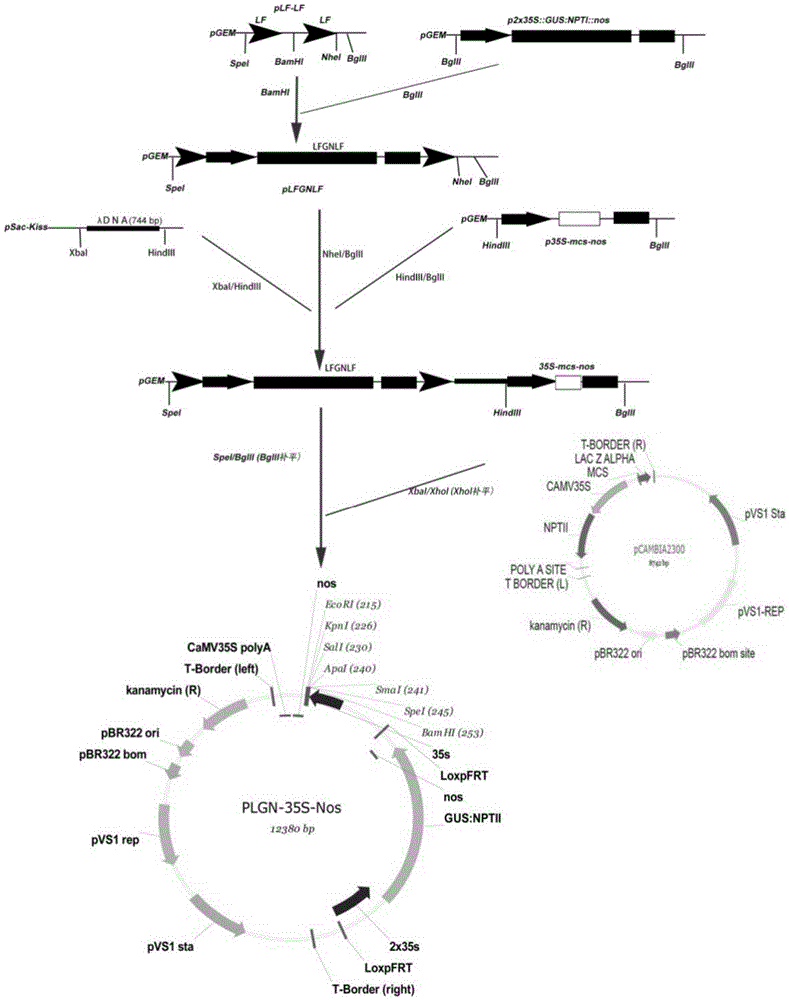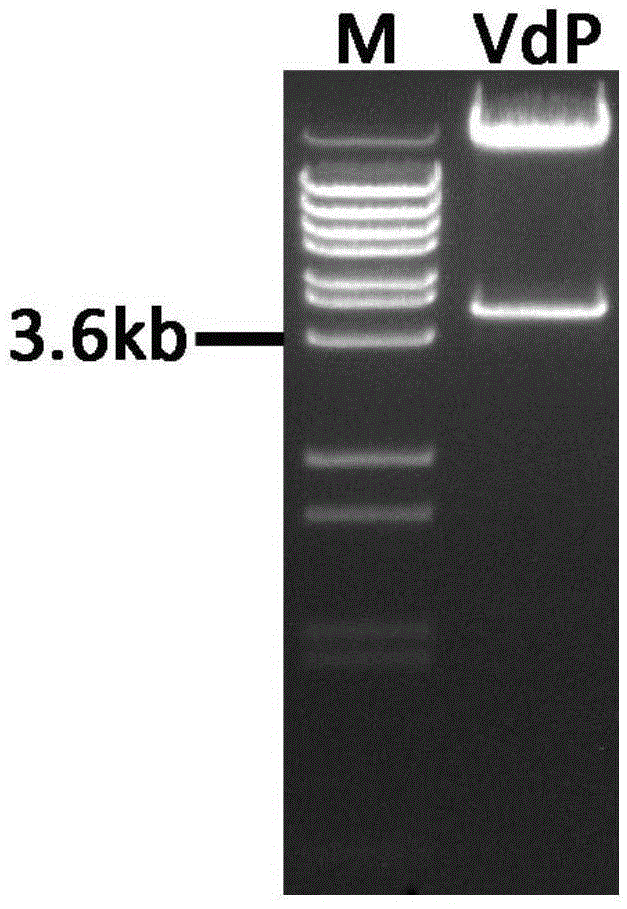Method for improving verticillium wilt resistance of plants by using Verticillium dahlia VdP4-ATPase gene
A Verticillium dahliae, transgenic plant technology, applied in botany equipment and methods, biochemical equipment and methods, plant products, etc., to achieve the effect of improving resistance
- Summary
- Abstract
- Description
- Claims
- Application Information
AI Technical Summary
Problems solved by technology
Method used
Image
Examples
preparation example Construction
[0132] 7.3 Preparation of Agrobacterium infusion solution
[0133] Agrobacterium strains containing LGN-35S-VdP4-ATPase carrier stored at -80°C were streak cultured to obtain single colonies, and then picked single colonies and inoculated into YEB supplemented with 50mg / LKm and 125mg / LSm (streptomycin sulfate) Medium (5g / L sucrose, 1g / L bacterial yeast extract, 10g / L bacterial tryptone, 0.5g / LMgSO 4 ·7H 2 0, pH7.0), 28°C, 200rmp shaking culture overnight, when the OD600 value of the bacterial solution reaches 0.8, take the bacterial solution and centrifuge, and resuspend the bacteria with the same volume of MSB liquid medium, and the resuspension is used for transformation Agrobacterium infusion solution.
[0134] 7.4 Genetic transformation and plant regeneration of tobacco
[0135] The leaf disk explants obtained in step 7.2 were immersed in the Agrobacterium infusion solution prepared in step 7.3 for 30 minutes, and then the bacterial solution was poured out, and the toba...
Embodiment 7
[0139] When the transgenic tobacco plants obtained by implementing the genetic transformation and molecular identification of Example 7 grow to 6-10 leaves in the greenhouse, use a scalpel blade to treat the root injury at about 1-2 cm away from the plant, and then water each plant to implement the method prepared in Example 7.1. L2-1 inoculation solution 30mL (injury root irrigation method), placed in 22 ℃ (night) - 26 ℃ (day) artificial climate indoor culture. 30 days after the inoculation, the disease grade of the transgenic plants was counted according to the standard of Example 7.2. The results showed that the average disease grade of 46 independent VdP-ATPase transformants was 1.17, and the disease index was 29.25. While the wild-type non-transgenic control (regenerated wild-type plants) had an average disease grade of 3.03 and a disease index of 75.65 (Table 1), compared with the non-transgenic control, the disease index of the VdP-ATPase transgenic line was reduced by ...
PUM
 Login to View More
Login to View More Abstract
Description
Claims
Application Information
 Login to View More
Login to View More - R&D
- Intellectual Property
- Life Sciences
- Materials
- Tech Scout
- Unparalleled Data Quality
- Higher Quality Content
- 60% Fewer Hallucinations
Browse by: Latest US Patents, China's latest patents, Technical Efficacy Thesaurus, Application Domain, Technology Topic, Popular Technical Reports.
© 2025 PatSnap. All rights reserved.Legal|Privacy policy|Modern Slavery Act Transparency Statement|Sitemap|About US| Contact US: help@patsnap.com



